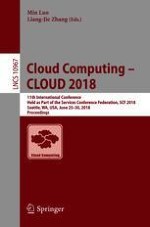2018 | Buch
Cloud Computing – CLOUD 2018
11th International Conference, Held as Part of the Services Conference Federation, SCF 2018, Seattle, WA, USA, June 25–30, 2018, Proceedings
herausgegeben von: Min Luo, Liang-Jie Zhang
Verlag: Springer International Publishing
Buchreihe : Lecture Notes in Computer Science
